The Dell Venue 8 7000 Series Review
by Brandon Chester on March 12, 2015 8:00 AM EST- Posted in
- Tablets
- Dell
- Android
- Mobile
- Venue 8 7000
GPU Performance
GPU performance is another important aspect of a device, and with display resolutions increasing there is always a need for more GPU power to drive more pixels. In the eyes of many consumers, Intel is not typically associated with speedy GPU performance, particularly in the mobile space. Many readers commented on the poor performance of Intel's HD Graphics in the Stream 7 review. However, one of the ways Intel's Moorefield chips are differentiated from some other chips in the Atom line is that they use PowerVR graphics. In the case of the Venue 8, it uses the PowerVR G6430 which was used previously in Apple's A7 chip.
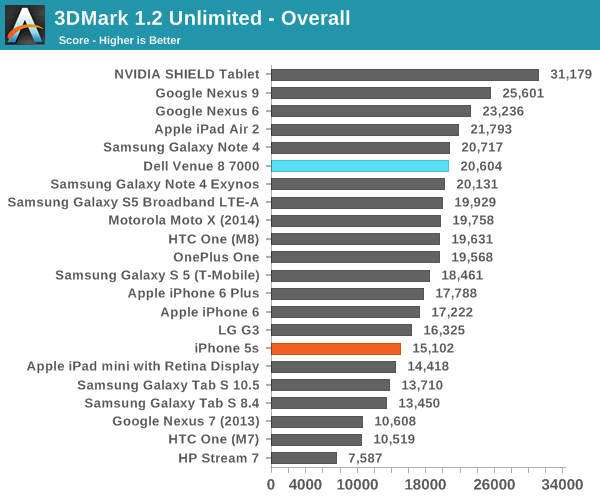
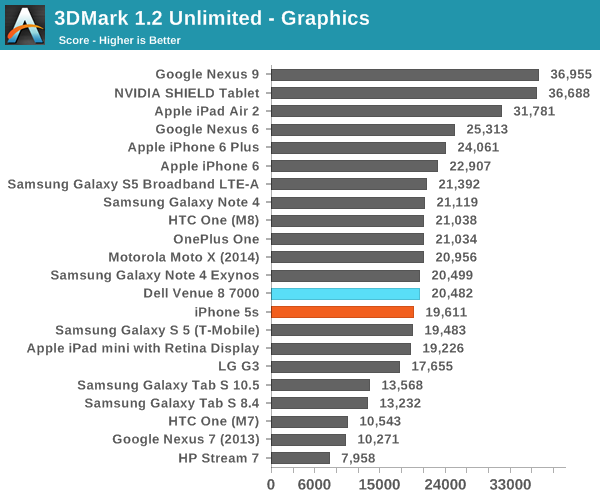
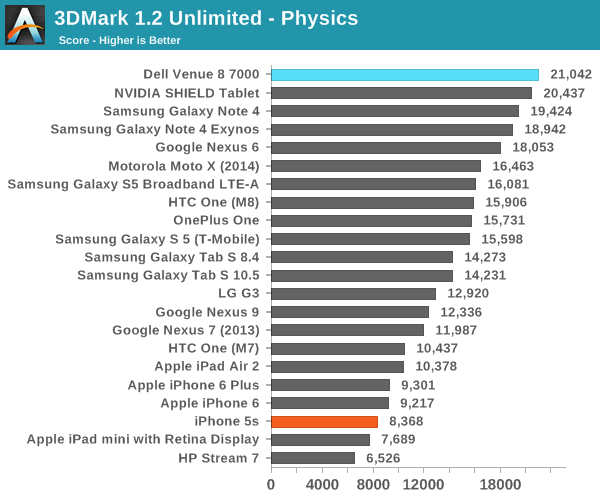

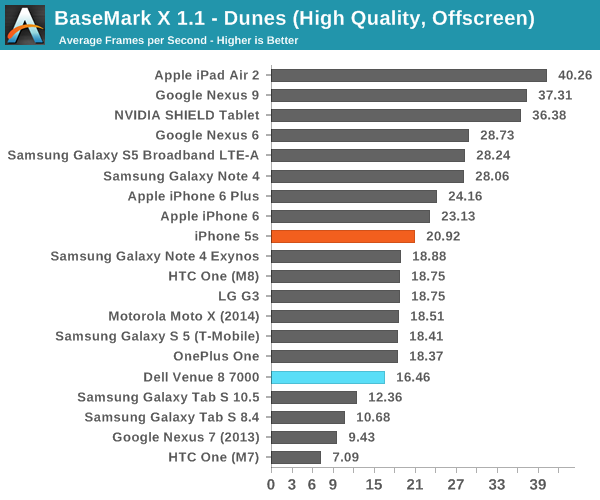
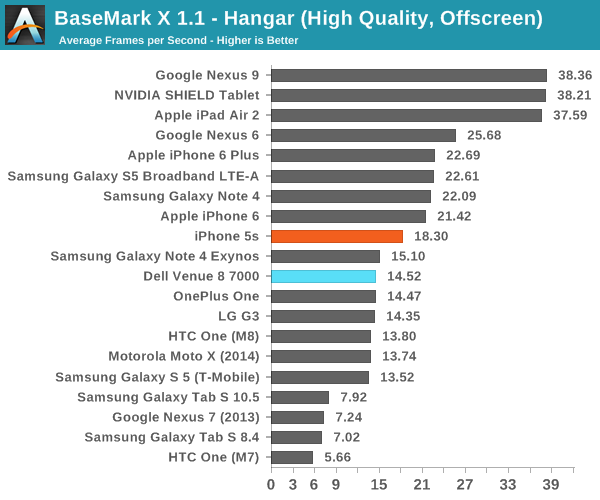
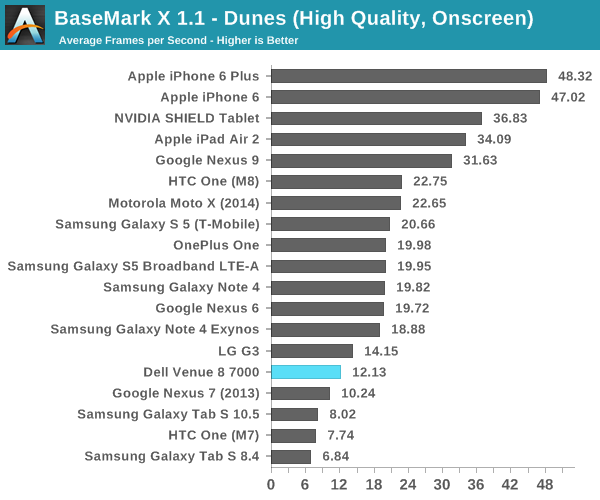
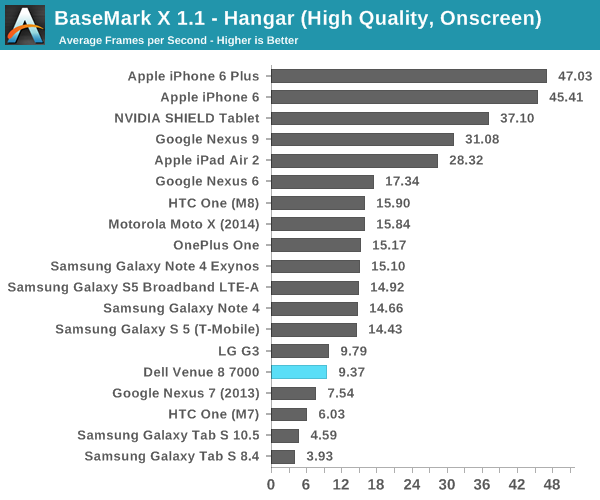
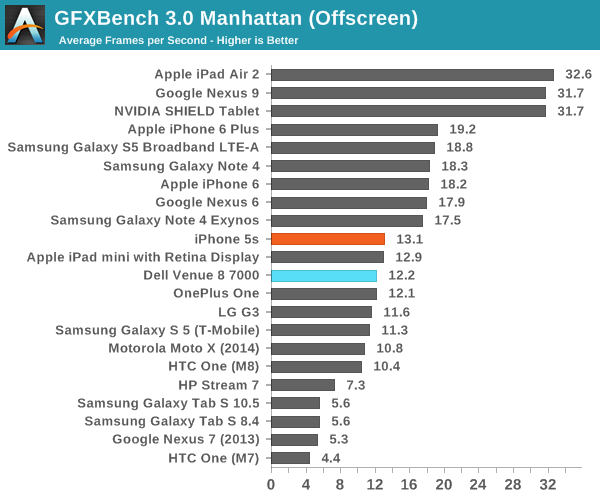
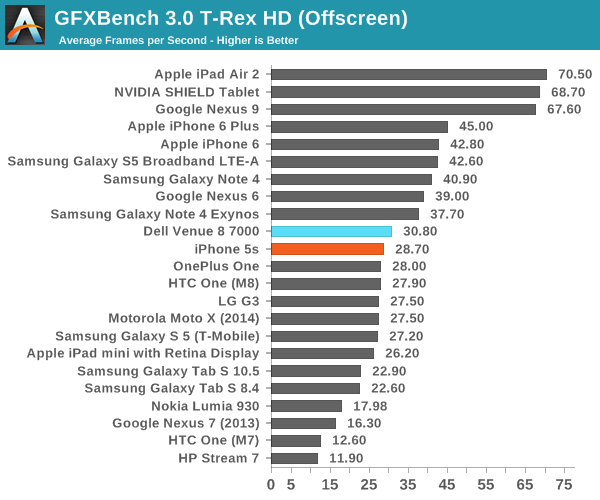
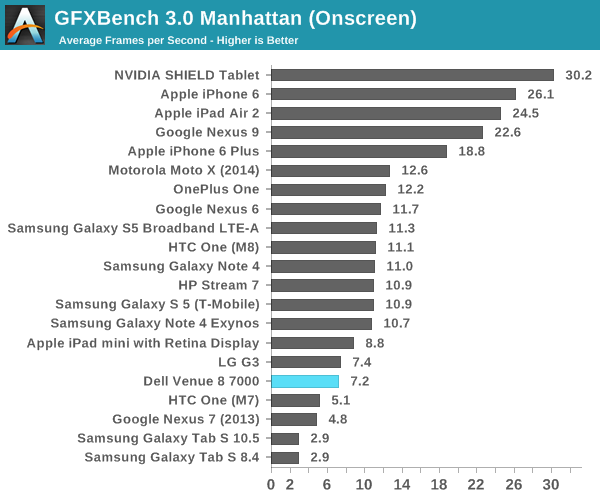
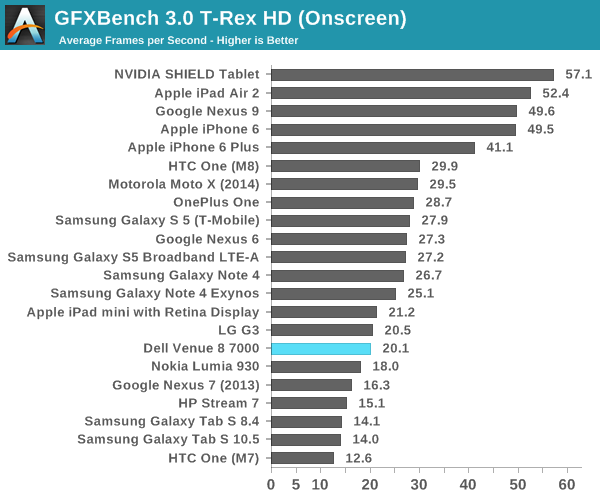
There has historically been a noticable gap in performance between a given PowerVR chip implemented in an iOS device, and the same GPU in an Android device. Due to drivers and other software factors, the performance of the Android device is typically slower. Because of this, I've marked the iPhone 5s on all the charts except for the onscreen ones so comparisons can be drawn between the performance of the G6430 GPU on different operating systems. In the 3DMark graphics test, the Venue 8 actually scores higher than the iPhone 5s, and in the GFXBench tests there is not a large difference between the two devices. In Basemark X there is a sizable performance difference between the two devices in favor of the iPhone, but overall I don't think anyone should be concerned about massive differences in GPU performance between the G6430 running on iOS and it running on Android.
When evaluating the Venue 8's GPU performance on its own, it can hardly be said that it's slow. However, it's now competing with Apple's 8 core Rogue GPU in A8X, and NVIDIA's Kepler graphics in Tegra K1. The devices with those GPUs end up performing between two and three times faster than the Venue 8 in many cases, and with Tegra K1 that GPU power is available in NVIDIA's Shield Tablet which undercuts the Venue 8 at only $299. GPU performance has simply moved onward from when G6430 was leading the pack, and although the Venue 8 isn't exactly slow, it's outgunned by other devices that meet and even beat its price.
NAND Performance
The performance of a device's internal storage has never been a large point of focus in the past. Mobile device manufacturers don't advertise anything about their storage beyond the capacity. However, the speed of a device's NAND can have a significant impact on performance. Slow memory can be what bottlenecks a system's performance when any sort of heavy reading or writing is occurring in the background, which occurs more often than one would think due to background applications and tasks like automatically downloading and installing app updates.
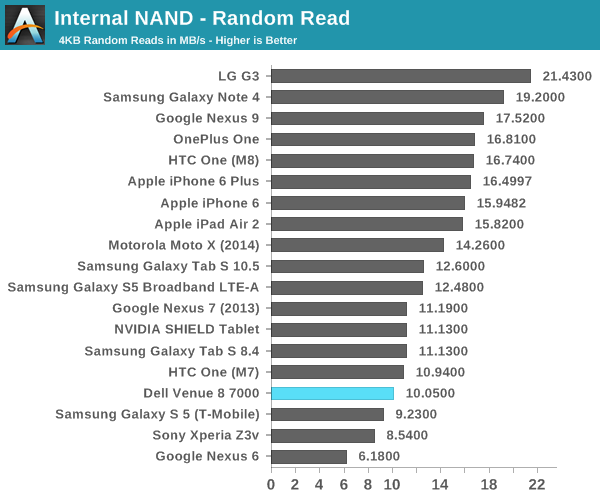

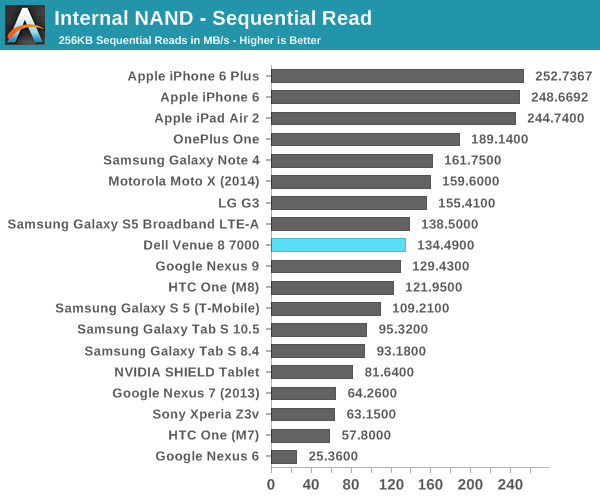
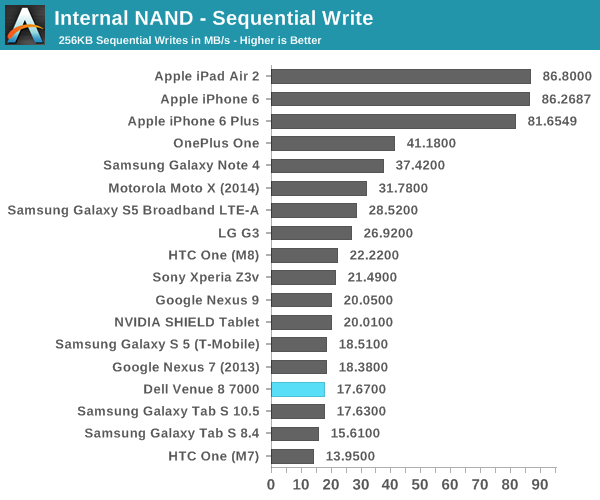
In all of our tests, the Venue 8 is decidedly average. There's no situation where it shines at the top, but also no cases where it's significantly worse than the competition. I wouldn't expect the Venue 8's storage speeds to cause any performance issues for users, though it would be nice to see at 32GB NAND option at this price.










89 Comments
View All Comments
darkich - Thursday, March 12, 2015 - link
your Intel *bias*Michael Bay - Thursday, March 12, 2015 - link
Consider how faster Atom became when Baytrail came. That`s generational improvement the article is talking about.Intel also always will be on superior process node compared to everyone else.
It`s only a question of supplying better GPU part.
lucam - Thursday, March 12, 2015 - link
This GPU is good, but not enough maybe for a tablet.darkich - Friday, March 13, 2015 - link
Lol.Consider how faster Cortex became from A9-A72. Around 400%.
Astonishing achievement that Intel can only have pipe dreams about.
LukaP - Friday, March 13, 2015 - link
Considering Intel managed to get Broadwell into 4.5W space i wouldnt be too worried about them. Their next gen atoms will be on par with any arm design. Dont forget that they have atleast one node advantage (with 10nm that will be two nodes) and ALOT more money to pour into RND.Look at what they are doing with iGPU performance. they realised AMD was stealing their market there, and came up with the Gen8 Iris Pro.
Same will happen in mobile. when intel wants something it takes it. Plus it helps that they can rely on the Intel Inside branding.
pSupaNova - Friday, March 13, 2015 - link
Every generation we hear the same arguments spouted by the Intel Crowd, then when the mobile products hit the market ARM based Socs beat Intels hands down.Intel can't own this market big players like Samsung & Apple who manufacture devices and design ARM SOCS will not let them gain a big enough foothold in the market.
The Mobile SOC race is over ARM won and Intel are now scrambling for the scraps.
Michael Bay - Friday, March 13, 2015 - link
Samsung SoCs are the ones scrambling for the scraps even within Samsung lineup, and Apple will always will be a thing in itself.This battle is far from over, and rushing to proclaim someone a winner only uncovers one`s uncertainty.
darkich - Friday, March 13, 2015 - link
That 4.5W Broadwell costs over $250, and is matched(in raw computing performance) by a $50 2W Exynos 7420, and almost matched by last year's 20nm A8X..Seriously, there is no competition whatsoever. Facts are overwhelmingly in favor of ARM based chips.
darkich - Friday, March 13, 2015 - link
Also, so far Intel always had a node advantage but trailed behind ARM despite of that.Now even that advantage is melting away.
Samsung is actually the first to have tested a 10nm process
Michael Bay - Friday, March 13, 2015 - link
Intel process advantage "melting away"?Nice mantra.
It took them literally years and years to get where intel was two years ago process-wise, and then it`s not even real 14nm. You`ll get years after years of Samsung milking it completely dry, then TSMC yields will finally catch up and they`ll have to think about moving to 10.
Intel will be somewhere below 5 by then.